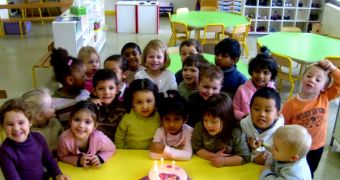A new scientific research demonstrates that children literally see things differently than adults do, especially until they reach the age of 13. It's only then that their brain begins interpreting visual stimuli the way the adult brain does.
One example the researchers behind the new work give of this change is that children need to learn certain abilities, such as for example determining whether shaded images are of convex or concave shape.
In the adult brain, the reasoning is quite simple, as we assume that light always falls from above. Unless there are firm grounds to believe otherwise, we always make this assumption, and base our judgments on it.
Kids cannot do this innately, and have to learn the ability as they age. Until they gain this ability, they perceive these shapes differently, New Scientist reports.
The goal of this investigation was to determine when the change takes place. The work was conducted by scientists at the University of Sheffield, in the United Kingdom, who were led by expert Jim Stone.
The group conducted the research on a group of 171 kids, who were aged between 4 and 10. The participants were shown shaded images, including footprints, and embossed shapes such as squares, and asked to make sense of them.
For each test subject, the experts prepared a group of 10 images, which were meant to determine whether the child could accurately tell if the images showed shapes that were concave or convex.
In a paper published in the latest issue of the esteemed scientific journal Perception, the investigators write that kids became better at recognizing the shapes as they grew in age.
“Children really do see the world differently to adults, inasmuch as their perceptions seem to be more variable. No wonder they can't look at a cloud without seeing a dog or a bear,” Stone explains.
A previous investigation, published a couple of months ago in Proceedings of the National Academy of Sciences (PNAS), showed that children have the ability to separate visual information into their individual components.
This is done so that their visual systems can learn how to fine-tune themselves for when they grow up.
According to other studies, sensory information does not begin to be fully integrated in the human mind until the child reaches 8 years of age.
It is widely believed that, before that time, the information that sense give children (sight, hearing, smell and touch) is not integrated in the same complete manner as it happens in the adult brain.

 14 DAY TRIAL //
14 DAY TRIAL //